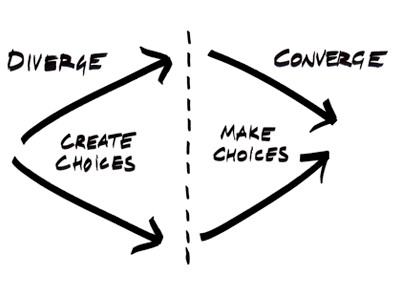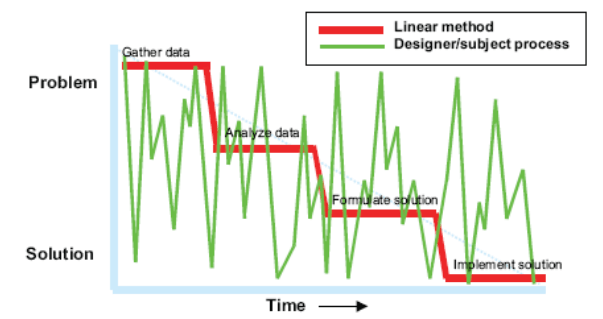The International Institute of Business Analysis defines in its “Business Analysis Body of Knowledge” (BABoK) that business analysis is “the practice of enabling change in an enterprise by defining needs and recommending solutions that deliver value to stakeholders”. To fulfil this task to a good standard business analysts require, among others, well-developed analytical and problem solving competencies. We all know that solutions we, business analysts, recommend to our organizations can stay within those organizations for quite a while. BABoK, in “The Underlying Competencies” chapter, provides a description of the behaviors, characteristics, knowledge and personal qualities that support the practice of business analysis. This chapter stresses the importance, among other aspects, of analytical thinking. However, is relying on analytical thinking sufficient to provide organizations with sustainable solutions?
Is analytical thinking the most important skill for business analysts?
On the one hand, the job title covers it all, you might say: business analysts must possess strong analytical capabilities; analytical capabilities that include the process of gathering information relevant to the business situation under investigation and identifying key issues related to this information. It also requires the business analyst to compare data from different sources/stakeholders, identify possible cause and effect patterns, and draw conclusions from these datasets to arrive at appropriate solutions. Analytical thinking is, in other words, a process of logical reasoning that converges on one “correct” answer based on the facts we discovered in our analysis. It can be compared with finding the answer to a question: what is one plus one? The correct answer is: two.
On the other hand, the world is changing at a rapid pace. The VansonBourne report, “The IT Complexity Challenge”, from October 2015, concludes that organizations have an increasingly difficult task trying to keep up with the introduction of new technologies and services as well as maintaining existing ones to a high standard to maximize the value gained. These changes in organizations are characterized by high complexity levels and are difficult to solve for many reasons: incomplete or contradictory requirements, the number of stakeholders and opinions involved, and the interconnected nature of these problems with other problems that exist in the organization. These problems are also referred to as “wicked”.

The definition states that wicked problems are ill formulated where information is confusing, where there are many clients and decision makers with conflicting values. Solutions to these problems are not right or wrong, they are simply “better”, “worse”, “good enough” or “not good enough”. The acceptance of solutions lies in the hands of stakeholders and their values and perspectives on how the solution should work/look like. We, business analysts, have to deal with wicked problems on a regular basis, don’t we?
Wicked problems vs analytical skills
In this complex landscape of wicked problems it may not be enough for a business analyst to rely solely on his/her analytical skills to provide satisfactory solutions to organizational challenges. The traditional analytical thinking may be inefficient due to the cumbersome process of gathering information, incomplete and contradictory datasets, hidden agendas of stakeholders and other social aspects of the situation. Alternative approaches may be required
Stepping out of the comfort zone: introducing design thinking
Design thinking isn’t anything new; it has been used for years, as already mentioned in the previous blog. However, the applications of design thinking have evolved over the last couple of years and its usage has expanded to business, in the broad meaning of the word. It has proven to be suitable to provide satisfactory solutions to the “wicked” problems we mentioned earlier. Design thinking is characterized by a recognition of the importance of good understanding the problem to be solved; a deep sensitivity to what stakeholders really want and, more importantly, what they choose to do in day to day life; a willingness to experiment, learn and refine; a focus on whole systems, not just on their parts.

To achieve that, design thinking employs concepts of divergent and convergent thinking, prototyping and iterations to problem solving. Through fostering curiosity, a holistic approach to business situations and focussing on stakeholders, the business situation is explored. This is required to develop a better understanding of current reality. Hypotheses are created that could work in an effort to find one that fits the problem situation. The divergent thinking intervenes with convergent thinking, narrowing these possible solutions down to some candidate solutions, which are further prototyped and evaluated. In this iterative way the best suitable solution is defined.
Design thinking lies close to our human “problem solving” nature. In the 80’s the Microelectronics and Computer Technology Corporation (MCC) looked into how people solve problems. The results are presented in the figure below:

Figure 1: Pattern of cognitive activity – the “jagged” line [source: http://cognexusgroup.com/]
The red line represents a linear approach from our work instructions or process descriptions, which prescribe how we should tackle a problem situation. The green line shows how people really work. The lines differ quite substantially, don’t they? This experiment showed that, faced with a novel and complex problem, people do not simply start by gathering and analyzing data about the problem. Cognition does not naturally form a pure, complete and abstract understanding of “the problem”. It simply does not work that way. It also illustrates that problem understanding can only come from creating possible solutions and considering how they might work. These possible solutions trigger more questions about the problem and strengthen the need to understand what is really needed. This experiment supports the success of design thinking where exploration, ideation, iterations and prototyping help provide value to stakeholders. It is more in line with our human nature.
Applying design thinking makes us better business analysts
Design thinking and its techniques are very much applicable to business analysis. We, as business analysts, are quite often “wicked” problem solvers and help our organizations to change and adapt to a fast-paced world. The idea of divergent thinking to explore the problem and ideate many solutions (possible or impossible), and then convergent thinking to select the best solution direction, fits perfectly with what we are doing. Design thinking offers us tools that help us:
(1) deal with stakeholders and their opinions,
(2) validate whether we are on the right track, and
(3) find solutions that delight the stakeholders in the end.